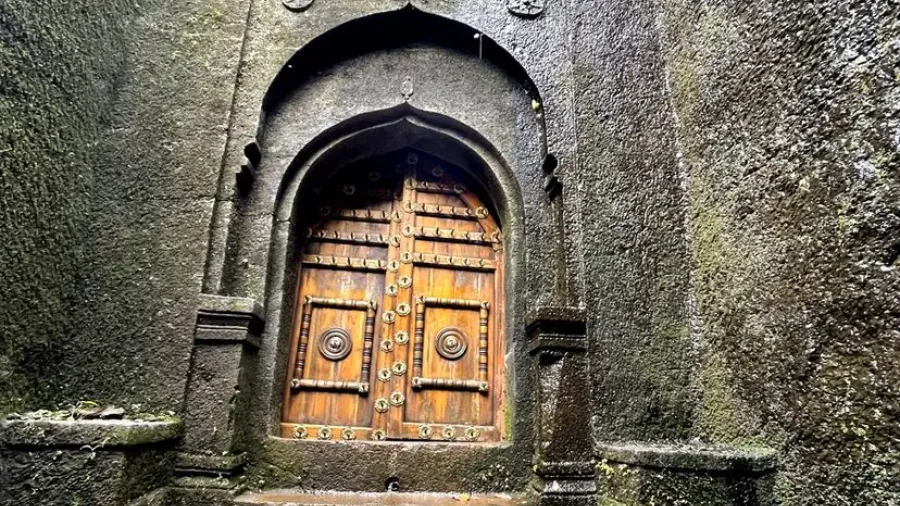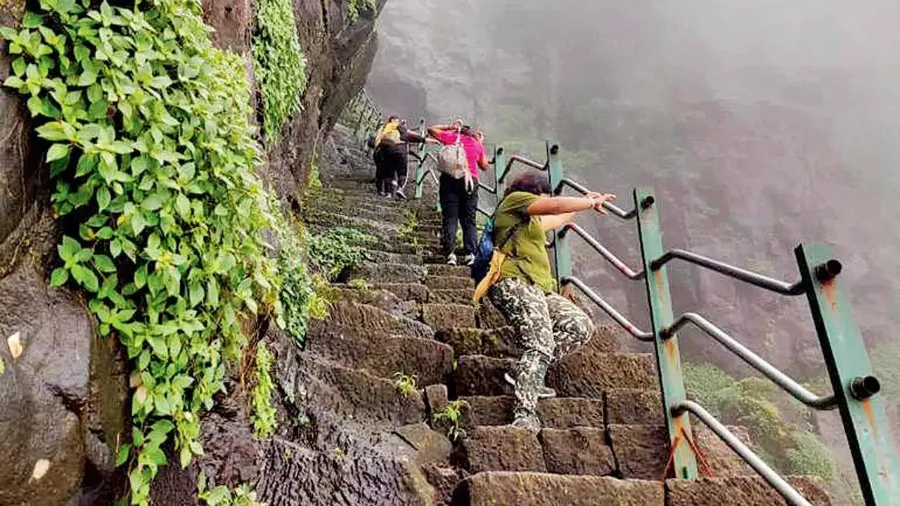Ratangad Fort: A Complete Guide to History, Trekking, and Mythology
Prabhuling jiroli
Ratangad Fort, an iconic structure in the Sahyadri range of Maharashtra, stands as a testament to the ingenuity and valor of the Maratha Empire. Known for its historical significance and breathtaking views, Ratangad is a popular destination for trekkers and history enthusiasts alike. This blog delves into the fort's extensive history, provides essential trekking information, and shares tips for a fulfilling visit.

1. Complete History of Ratangad Fort
Ancient Beginnings
Ratangad Fort was constructed in the 4th century by the Kalachuri dynasty and later came under the control of the Yadavas. Its strategic location made it an essential fortification for protecting the region from invasions. The fort's original name, "Ratangad," translates to "Jewel Fort," reflecting its historical importance.
Historical Significance
The fort gained prominence during the reign of Chhatrapati Shivaji Maharaj, who recognized its strategic value. It served as a crucial base for military operations against the Mughals and was a vital part of Shivaji's network of forts. Ratangad’s defenses and its commanding views made it a perfect lookout point for spotting approaching enemies.
Over the centuries, Ratangad witnessed several battles and has remained an integral part of Maharashtra's history. Its architectural features, including bastions and gates, reflect the Maratha style of fort construction.
2. Current Information
Fort Architecture and Features
-
Gates: The fort has multiple entrances, with the Zunjar Machi Gate being the primary one. This gate is known for its impressive architecture and serves as the main access point to the fort.
-
Towers: Ratangad features several watchtowers, including the Ratangad Machi, which provides stunning views of the surrounding valleys. The fort's walls are adorned with battlements that once served as lookout points.
Temples:
Within the fort, there are several small temples, the most notable being the Lord Shiva Temple. This temple attracts many devotees and adds a spiritual significance to the fort.

3. How to Reach Ratangad Fort
By Road:
Ratangad Fort is approximately 40 km from Nashik and about 180 km from Mumbai. The nearest base village for the trek is Ratanwadi, which can be reached by road.
By Train:
The nearest railway station is Kasara, about 50 km from Ratanwadi. From Kasara, local transport options like taxis and buses can take you to the base village.
By Air:
The nearest airport is Chhatrapati Shivaji Maharaj International Airport in Mumbai, located about 180 km away. Taxis are available from the airport.
4. Trekking Information
Trekking Routes:
-
From Ratanwadi Village: The most popular route, which takes about 2-3 hours to reach the fort. The trail is well-marked and suitable for most trekkers.
-
Alternate Routes: There are routes from Bhandardara as well, which offer more challenging treks for experienced hikers.
Trek Difficulty:
The trek is moderate, with some steep ascents. Proper preparation and fitness are essential.

5. What to Do
-
Explore the Fort: Walk through the fort’s ruins, including the Ratangad Machi and the various temples. Take in the panoramic views of the surrounding mountains and valleys.
-
Photography: Capture the breathtaking landscapes, especially from the watchtowers and cliff edges.
-
Nature Walks: Explore the flora and fauna of the region, as the fort is situated in a rich biodiversity hotspot.
6. What Not to Do
-
Avoid Littering: Keep the trekking paths and fort area clean by carrying back all waste.
-
Do Not Disturb Wildlife: Be respectful of the local wildlife and their habitat.
-
Don’t Trek Alone: It’s safer to trek in groups or with a guide, especially if you’re unfamiliar with the area.
7. What to Carry
-
Essentials: Water, snacks, a first-aid kit, and any personal medications.
-
Clothing: Comfortable trekking shoes and weather-appropriate attire.
-
Equipment: A camera for capturing stunning views, trekking poles for support, and a flashlight for exploring caves.
8. When to Visit
The best time to visit Ratangad Fort is from October to March, when the weather is cool and pleasant for trekking. The monsoon season (June to September) transforms the landscape into a lush green paradise, but the trails can be slippery and challenging.

9. Conclusion
Ratangad Fort is a remarkable blend of history, adventure, and spirituality. Whether you are an avid trekker, a history enthusiast, or someone looking for a serene escape, Ratangad offers an unforgettable experience. As you traverse its ancient paths and explore its majestic structures, you’ll find that the fort embodies the rich heritage of Maharashtra and the enduring spirit of its people.